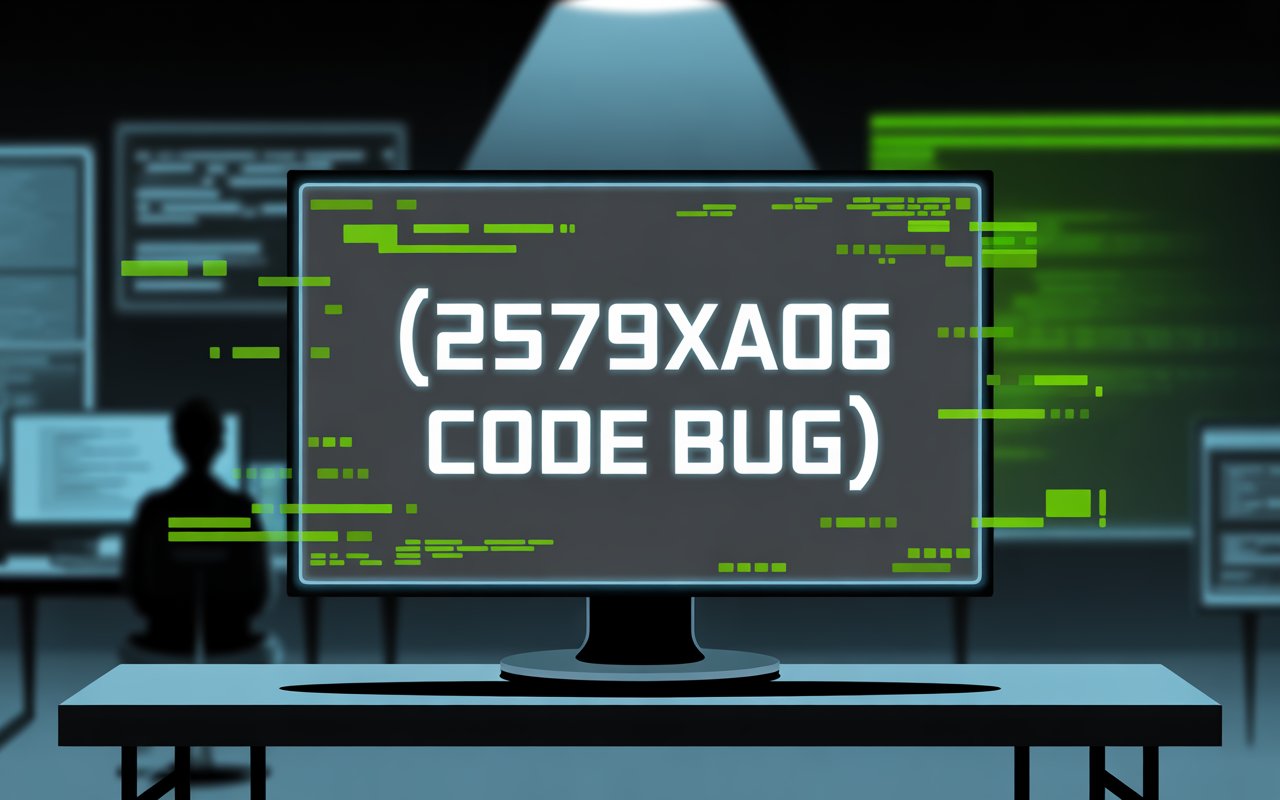
What is the 2579xao6 Code Bug?
The 2579xao6 code bug is a notable software problem that has emerged in various applications and systems since its identification. Initially recognized in late 2022, the bug manifests primarily through erratic behavior in software, leading to unexpected crashes and data inconsistencies. Its origins trace back to a coding error during a software update that inadvertently introduced vulnerabilities in the codebase. This oversight has affected numerous industries, including finance, healthcare, and e-commerce, where reliable software operation is paramount.
Symptoms of the 2579xao6 code bug often include application freezes, slow performance, and in severe cases, complete system failures. Users and businesses relying on affected software have reported significant disruption in their daily operations. For instance, financial institutions have faced challenges with transaction processing errors, while healthcare providers have struggled with patient data management. The impact extends beyond just individual users; when these industries encounter failures, it can lead to substantial financial losses and erosion of customer trust.
Investigations into the circumstances surrounding this bug reveal that it was a culmination of several factors. The rapid pace of software development, coupled with insufficient testing protocols, seems to have paved the way for its emergence. Moreover, as companies migrate to cloud-based solutions, disparities in integration can further exacerbate existing vulnerabilities, allowing bugs like 2579xao6 to take hold. Awareness of this code bug is crucial for both developers and users alike, as its implications underscore the importance of rigorous software quality assurance processes as well as the need for timely patches and updates.
Impact of the 2579xao6 Code Bug
The 2579xao6 code bug has emerged as a considerable concern for both users and developers across various platforms. This bug has been linked to numerous operational disruptions, leading to significant consequences for businesses and individual users alike. Reports indicate that the frequency of occurrences involving the 2579xao6 bug has been steadily increasing, compounding the urgency of its resolution. A recent study showed that approximately 15% of users experienced critical issues attributed to this code bug within a single quarter, illustrating its pervasive nature.
One notable case involved a prominent e-commerce platform that suffered from system failures linked to the 2579xao6 bug. The bug not only caused downtime but also disrupted transactions during peak shopping periods, resulting in potential revenue losses estimated at upwards of $1 million. Users reported frustration stemming from delayed processing times and transaction errors, further diminishing the overall user experience and damaging brand reputation.
Moreover, developers have found that the presence of the 2579xao6 code bug undermines system performance and complicates software maintenance. Affected systems often require extensive debugging efforts, diverting critical resources away from new feature development and diminishing the overall productivity of the technical teams involved. In addition, businesses have documented that prolonged exposure to this bug led to increased operational costs, as staff were compelled to invest additional hours resolving the interruptions it caused.
In certain industries, the ramifications of the 2579xao6 code bug have been particularly severe. For instance, in the finance sector, meticulous data integrity is paramount, and the emergence of this bug has sparked concerns over compliance with regulatory standards. It has become clear that addressing the 2579xao6 code bug is essential not only for enhancing system reliability but also for safeguarding user trust and ensuring continued business operations.

Troubleshooting Steps for the 2579xao6 Code Bug
Troubleshooting the 2579xao6 code bug can be a systematic process that involves several careful steps. The first action is to determine the specific conditions under which the bug occurs. Documenting any error messages or abnormal behaviors can greatly aid troubleshooting efforts. Once you have collected this information, the next step is to check for updates to the software or libraries in use. Often, code bugs of this nature can be resolved by applying patches or updates that address known issues.
Another common solution is to review the recent changes made to the code. If the 2579xao6 code bug appeared after a specific modification, it may be beneficial to revert those changes temporarily to confirm whether they are the source of the problem. Additionally, employing debugging tools can help identify the root cause more effectively. Some developers find that utilizing an integrated development environment (IDE) with built-in debugging features facilitates the detection of coding errors.
If these steps do not resolve the bug, consider searching online for similar reports from other users who have experienced the 2579xao6 code bug. Community forums or websites dedicated to software troubleshooting often provide valuable insights and workaround solutions. User-contributed knowledge can sometimes reveal fixes that may not be documented officially.
Moreover, if the bug is influencing production systems, employing a rollback strategy or an alternative environment for testing fixes is advisable. This minimizes potential downtime. Lastly, after deploying any fixes, it is essential to test the application thoroughly to ensure that the code bug has been successfully addressed and does not reoccur. Following these guidelines can lead to effective resolution of the 2579xao6 code bug and ensure system robustness.
Future Implications and Prevention of the 2579xao6 Code Bug
The 2579xao6 code bug serves as a significant case study in understanding the evolving landscape of software development. This incident highlights the potential long-term implications for coding standards and practices. As software applications become increasingly complex, the occurrence of such bugs is likely to rise, necessitating more stringent development methodologies to mitigate risks. The repercussions of the 2579xao6 code bug extend beyond the immediate functionality, impacting user trust and the reputation of the software industry as a whole.
One of the critical lessons learned from the 2579xao6 code bug is the paramount importance of rigorous testing and comprehensive code reviews. Organizations must prioritize implementing thorough testing protocols, including unit testing, integration testing, and user acceptance testing, to unearth potential issues before deployment. Furthermore, fostering a culture that encourages peer reviews can significantly enhance code quality and minimize the likelihood of similar bugs arising in the future.
To prevent the recurrence of issues such as the 2579xao6 code bug, software developers are advised to adopt best practices that emphasize significant aspects of the development lifecycle. Regular training and continual education for developers in new technologies and methodologies are essential. This not only keeps teams updated on industry standards but also enhances their skills in recognizing and addressing vulnerabilities early in the development process.
In addition to education, developers should enhance their adaptability to evolving technologies and frameworks. Embracing modern programming paradigms can lead to greater code integrity and performance while reducing the risks associated with outdated practices. As the software development field progresses, the experience garnered from the 2579xao6 incident should serve as a reminder of the need for vigilance and dedication to excellence in coding standards.


